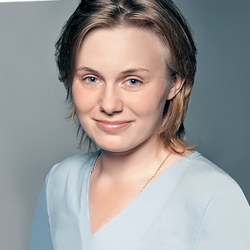Realnoe Vremya’s research: Kazan shopping malls lose one in ten visitors
A good mine in a tough game — managers of large shopping malls are sure the number of visitors “keeps growing”
Almost a year has passed since the opening of Kazan shopping malls after the general self-isolation because of the coronavirus pandemic. Realnoe Vremya has tried to find out if customer traffic has recovered and how Kazan citizens’ preferences have changed, since before COVID-19 people used to go to shopping malls not only to make purchases but also to have fun considering them as a leisure area. Correspondents of our newspaper have measured consumer traffic in big malls of the city and surveyed experts about new trends in the market of commercial realty. Read more in our report.
Visitors are counted in the evening
Realnoe Vremya’s analysts have done their own experiment to count the traffic of Kazan shopping malls. Traffic has been measured on working days (except for Friday, holidays and weekends) in the evening, from 18.30 to 19.30. Visitors have been counted at the main entrances to malls. The results, of course, don’t show the big picture, they are rather an estimate of tendencies, not a large-scale study.
Realnoe Vremya turned to the administration of every shopping mall that’s present in the research to ask how the number of visitors had changed compared to 2019 and 2020, if today’s traffic is enough for a business’s fully-fledged operation and the lowest digit for shopping malls to survive in the market.
“We don’t compare traffic with last year because we were closed for 3,5 months in 2020,” Mega shopping mall’s press service explained. “Compared to 2019, traffic is 6% lower today. Considering altered consumer behaviour, this situation is normal. Our guests and employees’ health and safety is a priority for us. This is why in the current situation we don’t try to increase the traffic and we aren’t planning to host big events at least till the end of the summer.”

“Despite the summertime and low season, traffic keeps growing month after month,” Realnoe Vremya was told at Kazan Mall. “The lowest traffic is traditionally in the morning with considerable growth in the daytime and then in the evening. We see a significant rise in the traffic in entertainment areas at weekends (a children’s park, the cinema, e-karting, the roof). In summer, the main focus shifts to entertainment, cafe and restaurants in open-air verandas.”
For safe shopping!
In answer to the question of how visitors’ preferences have changed after the lockdown, Liliya Ibatullina replied: “People come both to go family shopping and have a good time. It is a food court, the cinema, 7D Avatar entertaining centre, a children’s club. During the lockdown and a number of other restrictions, of course, people missed the habitual lifestyle.”
A family visit to a shopping mall to eat in the food court, watch a film was particularly the habitual lifestyle for Kazan citizens before COVID-19. With the coming of the summer season, the number of such guests increased, the newspaper’s interlocutor assures us. As for sales, according to her, there is increased interest of consumers in sportswear, children’s goods, products for home and garden, household appliances and electronics. Sadly, no Kazan shopping mall has managed to answer the question about specific numbers characterising the traffic. Representatives of some shopping centres willingly explained what was done to attract consumers and increase the traffic.
“New activities, events designed for different audiences, the opening of stores of new brands notably increase the traffic,” Kazan Mall explained.
“The success of any shopping centre has always depended on three key factors: accessibility and location, visitors’ comfortable stay, the number of tenants. Now safety and health of employees and visitors of the shopping mall became an important task. In other words, shopping must be comfortable, diverse, profitable and safe. We are developing precisely in these areas,” said Liliya Ibatullina. “An additional escalator appeared in the left wing, new navigation in galleries and at the underground parking was installed, all sanitary rooms were repaired, a vaccination point opened. Free buses run on working days. Additional evacuation exits for disabled people were created during the renovation.”
“This indicates a gradual and slow but still recovery of traffic in facilities”

She provided norms of the traffic in shopping malls created by the National Council of Shopping Centres “during the pre-COVID-19 times”. If we go by them, Stryukova thinks the numbers should look the following way:
Given Realnoe Vremya’s data, Yelena Stryukova assumed that nowadays traffic in shopping malls is 10-15% lower on average than before the pandemic.
“I think this reflects the general tendency for a lower traffic rate of facilities and an outflow of online activity, which indicates a gradual and slow but still recovery of traffic in facilities.”
She stressed:
“The calculations are very approximate, but the approach to measurements is corresponding too.”
“This won’t lead to structural changes”

“Is there a critical point after which a shopping centre can go bankrupt as an enterprise?”
“Turnover, tenants’ revenue have to fall to change internal commercial conditions, rent rates and revenue. If it falls, tenants start leaving the shopping mall, the number of vacant positions grows, and the shopping mall often changes its owner after that or informs a bank.”
However, Lvova thinks that Kazan is insured against this at the moment because there were few modern shopping malls until recently. She says that now “the situation is bad but it won’t lead to structural changes”.
“There are two key possible risks,” Lvyova explained. “Those shopping centres that took out loans are losing the possibility of repaying loans and are handed over to banks, those that are free from loans can change owners. The second process is quite secret, and large Russian businesses like to buy assets that are under stress. They can buy assets, but there is just a couple of such deals. While it is unprofitable for banks in the current market situation to accept an asset that’s hard to resuscitate due to general market reasons, this is why they try to come to an agreement with owners and find other solutions.”